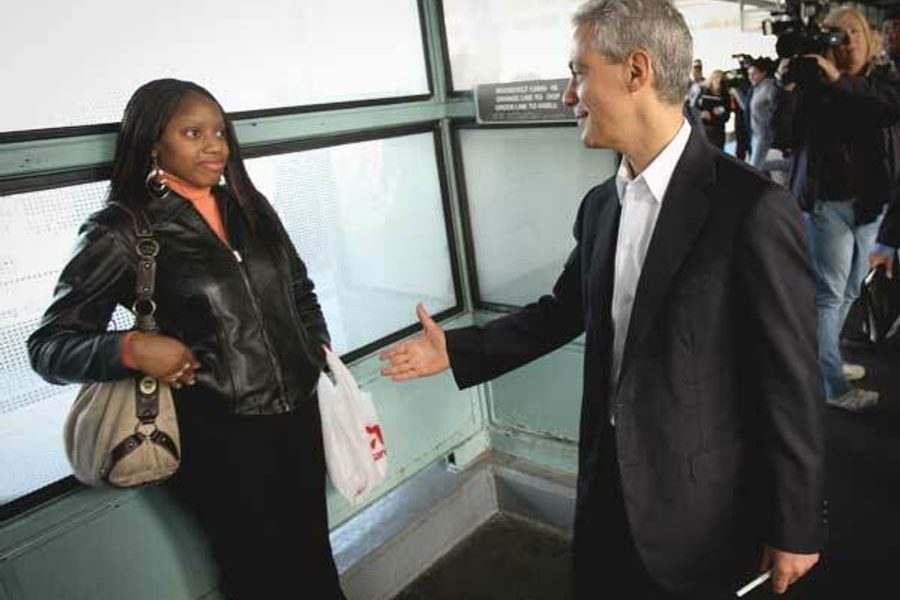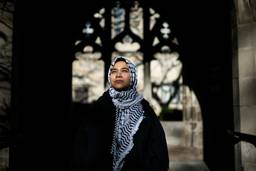Changing the Daley Routine
As a Chicago dynasty ends, progressives weigh their options.
David Moberg

No political dynasty has ruled a major American city as long as the Daleys of Chicago – mayors since 1955 with an interregnum of 12 years. In September, Richard M. Daley announced he would not seek re-election next spring, unleashing a frenzy of candidacies but little voter enthusiasm.
Initially, prospects seem remote for electing a progressive like Harold Washington, Chicago’s first black mayor, in office from 1983 to 1987. There is no obvious candidate, and the Washington coalition of blacks, Latinos and liberal white reformers has withered.
With a nonpartisan primary in February and a likely run-off in April, reformers have little time to re-group. But even if a mayor in the Daley mold, like President Barack Obama’s former White House Chief of Staff Rahm Emanuel, were to win, politics in Chicago could be more fluid and open to reform, despite Daley’s legacy of grim budgetary obstacles.
Richard M. aggressively privatized both services and revenue-generating assets, like toll roads and the city’s parking meters. He also created tax increment financing districts (TIFs) in commercial areas, which effectively deprive the city of desperately needed revenue for basic services.
While Both Daleys promoted central city real-estate development, Richard M. tried to make the city attractive, environmentally friendly and culturally lively to attract the middle-class professionals who filled the gaps that resulted from declining manufacturing employment.
With mixed success, the younger Daley sought to turn Chicago, the Midwest regional capital, into a global city of finance, business services and corporate headquarters. Its growing “post-industrial” workforce accelerated gentrification of the lakefront and a swath of old working-class neighborhoods. Taking control of the educational system, he developed new schools that kept more upper-middle-income families in the city, but his business-mentality school reforms produced few benefits for most students.
Daley did little for the poor in the nation’s eighth most inequitable urban region. The nonprofit Developing Government Accountability to the People gave him a “D” overall on its 2010 report card (with a higher grade only on the environment). Daley’s final $6.1 billion budget had a $655 million gap (over $1 billion counting pension obligations). Daley filled the hole mainly by using nearly all the remnants from the recent $1.15 billion long-term parking meter privatization contract.
The new mayor will inherit a city in better shape than most Rust Belt towns, but with typical big city economic and social problems complicated by its political history, especially sharp racial divisions intensified under Richard J. Daley.
After Richard J. died, black discontent increased, helping to elect insurgent Mayor Jane Byrne, then turning her out and electing Washington in 1983. Washington campaigned for both reform coalition goals and a bigger black political voice, then faced a hostile white majority in the city council.
Daley cleverly inverted Washington’s coalition, uniting increasingly upper income lakefront whites, bungalow belt white working-class voters and Latinos. He largely isolated blacks, in part because many African-American leaders ignored coalition building. Daley, who preserved many Washington-era policies, increasingly included, bought off or intimidated leaders from black and other communities, including LGBT leaders and the disabled. He crushed opponents in every election, partly relying on a few traditional ward machines. But as TV replaced the precinct committeeman, he depended on raising big money for conventional campaigns (for which Emanuel raised funds).
In the Daley years, community groups, unions, and single-issue organizations focused on issues like housing or the environment fought on, but the reform electoral movement bridging race, ethnicity and income, dwindled. “There’s no strong progressive movement in the city,” says Henry Bayer of AFSCME (public workers union) District Council 31, though with Daley gone it may evolve.
Even more than in Washington’s victory, progressives can only win with a multi-ethnic campaign coalition that emphasizes neighborhood development and democracy. Since 1983, the ethnic calculus has changed with new immigration and gentrification, reinforcing that lesson. Now blacks make up about 37 percent of Chicago’s population, whites 42 percent and Latinos 26 percent (but about 15 percent of the electorate).
Emanuel, with a strong advantage in raising money, probably the most support from the business elite and close association with Obama, entered the race as the front-runner. But he faces strong opposition from many quarters as, in the words of two different union leaders, “Daley on steroids” or “Daley, but meaner.” Early on his conservative inclinations showed in proposing to fund schools with corporate donations, giving businesses more control over education.
Local black politicians have led a troubled effort to seek black community agreement on a single African-American candidate. The group considered four contenders: former Sen. Carol Moseley Braun, attorney Larry Rogers Jr., (a little-known commissioner on the county’s property tax Board of Review), State Sen. James Meeks (a popular megachurch preacher who pushes for better school funding but is anti-abortion, pro-school voucher and anti-gay) and U.S. Rep. Danny Davis (who lost an earlier run against Daley II). On November 6, it selected Davis, although Braun and Meeks have also officially entered the race.
City Clerk Miguel del Valle, once a Washington ally, is the favorite of many Latinos and progressives from other communities. He could emerge as an alternative to the two leaders with high negatives, Emanuel and Meeks, if he demonstrates he can mount a serious candidacy.
Despite the large number of candidates, some probable contenders have not entered – like scandal-scarred Rep. Jesse Jackson Jr. or Rep. Luis Gutierrez or Sheriff Tom Dart, a fairly progressive machine politician who would have cut deeply into Emanuel’s likely support. If popular, progressive state Attorney General Lisa Madigan ran, she would immediately be favored to win.
Community groups are drawing up position papers to influence candidates, but largely are refraining from early endorsements. The Chicago Federation of Labor voted to seek a unified endorsement, but for now, as one union political director says, “There are no strong feelings except that nobody who’s emerged deserves our support.” Labor unions – as well as some community groups – do plan to push for more progressive members of the city council, where 20 of 50 seats are considered wide open. Even Emanuel may not be able to assert Daley-style dominance of the new council.
Unlike the 1960s, when white liberals led much of the reform challenge to Richard M., the rebirth of the progressive movement heavily depends on whether unions drift back to the alliance with business and Daley-Emanuel Democrats or ally with neighborhood groups, largely low-income blacks with a class-based view of what ails the city.
For now the crowded field of mayoral candidates faces a skeptical public and daunting challenges. “I don’t see any good candidates at all,” says Elcee Redmond, organizer for the low-income South Austin Coalition. “It’s going to be a dismal race.”
And despite Daley’s transformation of the city center, one influential labor leader says, “I don’t think his legacy is that great. Pull that away, and what do you have? Not much. Whoever gets the mayor’s office will be in an awful spot. Welcome to the Titanic.”
David Moberg, a former senior editor of In These Times, was on staff with the magazine from when it began publishing in 1976 until his passing in July 2022. Before joining In These Times, he completed his work for a Ph.D. in anthropology at the University of Chicago and worked for Newsweek. He received fellowships from the John D. and Catherine T. MacArthur Foundation and the Nation Institute for research on the new global economy.









